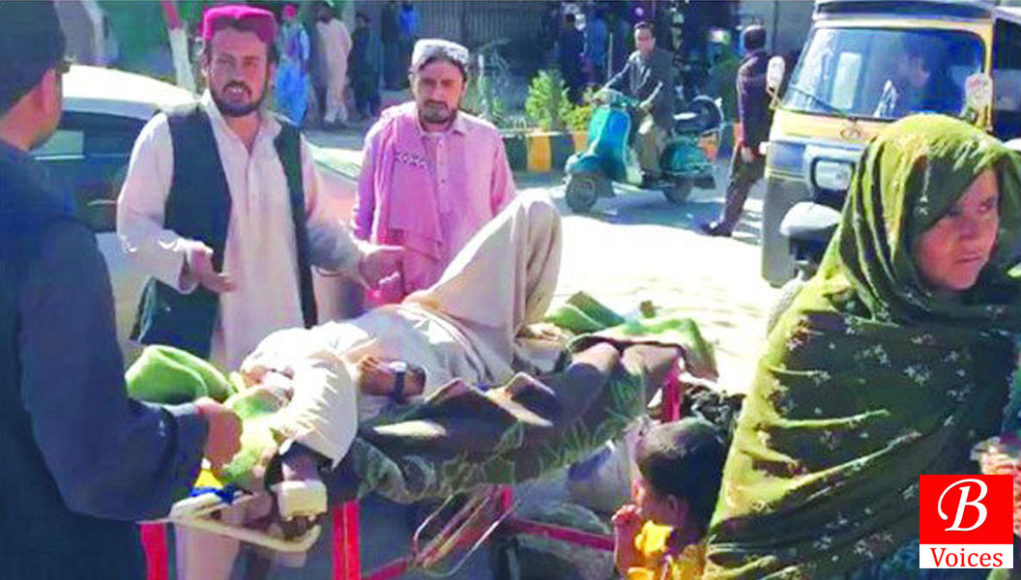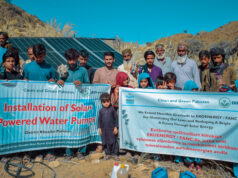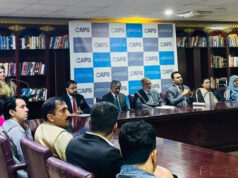Adnan Aamir
On November 28, a group of students gathered outside a snack shop in Turbat Bazaar. After long hours of classes and before going back home, they stopped to buy pakoras. A van carrying the students was also parked near the shop, waiting for them to return so that they could be transported to their homes. Suddenly, there was a huge bang and a fire erupted, which quickly engulfed everyone in the vicinity. It was not a terrorist attack. It was the gas cylinder of the shop.
The school van caught fire and students inside the van and those standing outside became the victims. The students and other victims of this incident got deep burns. Unfortunately, there was no burn unit in Turbat, the second largest city of Balochistan, to treat these students. They were taken to Karachi, which is about 700 kilometres away. Most of the injured were transported to Karachi by road and five of them were booked on a PIA flight. A total of 23 people were injured and six succumbed to their injuries. Four of the deceased were siblings.
The loss of life could have been controlled if emergency care was available in Turbat. However, this was not the case and the incident proved to be yet another case which exposed the state of the healthcare sector in Balochistan. For the fiscal year 2018-2019, Balochistan has allocated Rs19.41 billion for health expenditures, which makes up 8.71 percent of the total budget. Clearly, this budget is not being spent appropriately.
Chief Minister Balochistan Jam Kamal listed “Use of Twitter to resolve problems of people” as one of his achievements in the first 100 days of government. He regularly tweets about health issues and asks citizens of Balochistan to report problems in hospitals. Upon receiving complaints from citizens about the shortage of doctors in one hospital or lack of medicines at a Basic Healthcare Unit, he takes action. This approach only solves one-off problems but it does not address the structural flaws in the system.
Highway accidents are a major example of how lack of healthcare facilities increases loss of life. In Balochistan, more people die in highway accidents than suicide blasts. A study conducted by this scribe showed that in the period from 2005 to 2015, 488 people died in suicide blasts and 2,238 died in highway accidents. There are five times more deaths on highways than suicide blasts. The reason for this can also be traced back to absence of healthcare facilities.
Most highway accidents in Balochistan take place on the 700-kilometre-long Quetta-Karachi highway. Whenever an accident takes place, the wounded require timely and proper medical care to survive. However, proper healthcare facilities are only available in Quetta and Karachi, which are the connecting nodes and no adequate healthcare facility is available on the long highway. If an accident takes place near Khuzdar, then the wounded passengers can either be taken to Quetta (which is five hours away) or Karachi (which is four hours away). The time wasted increases risks to their lives.
Despite the mounting loss of life in highway accidents, the government is not taking urgent steps to tackle the problem. This can be seen by analysing the development budget of the province. Balochistan spends a mere 8.50 percent on health development as compared to 30 percent on building and roads. Clearly, controlling the loss of life on highways by providing emergency healthcare is not a priority area for the government.
Moreover, nutrition is another area of the healthcare sector which is being neglected. According to the nutrition data of 2011, 40 percent of children in Balochistan are underweight and 52 percent are stunted. The situation has not improved since 2011 and because of this, the government also recently imposed a nutritional emergency in Balochistan.
Presently, nutrition programs are being carried out in seven out of 33 districts of Balochistan. These nutrition programs are being carried out with the financial support of foreign donors and the Balochistan government is not ready to allocate its own resources to take on the issue. Even for the newly imposed nutritional emergency, the government is expecting funding from foreign donors. Although there is no harm in receiving foreign funding for social development, there is an extent to which such funding can assist. Ultimately, the Balochistan government has to use its own resources to deal with the problem.
Moreover, there has been a surge of AIDS patients in Balochistan. Provincial chief of the AIDS Control Program, Dr Afzal Zarkoon claimed that the registered number of AIDS patients in Balochistan had crossed 5,000. The government has treatment centers for these patients but it has failed to spread awareness about the disease.
“The program was unable to fully raise awareness about it,” conceded Zarkoon while addressing a seminar on AIDS prevention. This proves that even resource-rich components of the health department are not doing their jobs properly because resources are not being used effectively.
In the conflict-hit province of Balochistan, where terrorism incidents have become a norm, healthcare is now an afterthought. It goes without saying that there is an urgent need to tackle the problems of the healthcare sector in Balochistan. This can’t be achieved by merely imposing a health emergency, like the case of failed education emergency of the previous government. Resolution of this problem requires a holistic approach which should depoliticize the health department, curbing the problematic role of health unions, allocating additional resources for health and ensuring accountability of those in charge of these resources.
Originally published in The Friday Times
Share your comments!








